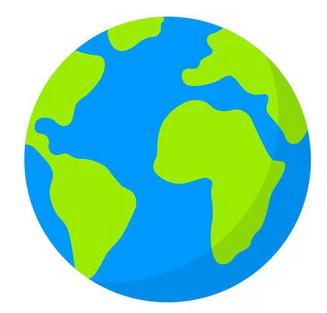

Prend bien soin de toi 🤗


Prend bien soin de toi 🤗


De ce que j’ai compris, les linguistes considèrent que le dico de référence pour ce qui est de capter les évolutions des usages, c’est le Robert, celui plus conservateur qui tente d’établir un Français “correct” c’est le Larousse, et celui de l’Académie a un intérêt surtout pour regarder l’évolution du Français gouvernemental depuis 1694 avec 30 ans de retard sur la société.


Il ne peut en rester qu’un!
Duel final sur le bord du canal.


Bonne question


Note que c’est pour les achats à distance, et qu’on parle de soit numéro de tel ou email. Je suppose que ce sera possible par le site web de la banque. On est quand même en droit de supposer que si tu achètes à distance, tu as un accès internet.
En physique, tu utilises la carte, mais un commerçant peu scrupuleux ne pourra plus copier ton numéro de carte.


Oui! Si on pouvait calculer le gain en bonheur, ça serait extrêmement rentable! Diviser la fortune d’un millionaire change moins son bonheur que d’augmenter de 10% celle d’une personne de classe moyenne


Oui. Mais au delà, c’est maladif plus qu’autre chose.


Mon fils (CM2) trouve inutile le vocabulaire et le Français, la lecture, la poésie et les rimes. Je viens de lui montrer les bonnes scènes de Cyrano de Bergerac, la balade du duel, les insultes qui demandent quasiment de les décoder avec un dico sur les genoux et il a adoré. On a beaucoup rigolé.
Il veut qu’on regarde le film ensemble et que je lui explique les passages qu’il comprend pas.
Je formule l’espoir que ça lui mette finalement un livre entre les mains.


En utilisateurs je sais pas, mais en revenus, c’est énorme ce qu’ils perdent: https://finance.yahoo.com/news/twitters-revenue-collapses-84-tesla-171535190.html
En nombre d’utilisateurs, oui ils semblent en perdre depuis un moment à un rythme lent, mais c’est un peu trop tôt pour mesure l’exil post-election.


Le Trump sur le départ avait forcé la main de Biden sur l’Afghanistan, causant le désastre qu’on sait. Il s’était d’ailleurs vanté que Biden ne pourrait changer sa décision. Qu’il critique des décisions prises par un président sortant et engageant le suivant c’est du foutage de gueule qui ne mérite aucune attention.


I’m not sure I’ll have the time to go through all of your claims but I’ll try to address the most salient ones. Please tell me if there are things that I missed that you would like to see addressed. It may wait for a few days though, sorry.
What do you think of this report by GTK? See slide 23. I would be interested in what you are looking at more specifically from the USGS and how these views could be made consistent.
One of the crucial misunderstandings in this question is the nature of reserves and what it means. So let’s first check what the report you mentioned (which by the way does not cite its sources or its methodology) is using in terms of reserves. It is not clear where their numbers come from. Here is the 2018 report on nickel. They probably used the “reserves” numbers, but the USGS is a bit more pessimistic than they are there: USGS estimated 74 million tonnes. They also considered total resources of 130 million tonnes.
Here is the 2024 report on nickel: 130 million of global reserves, 350 million tonnes of resources.
What magic is that? Well, there is a reason I mentioned the definition appendix as mandatory reading:
Reserve: That portion of an identified resource from which a usable mineral or energy commodity can be economically and legally extracted a t the time of determination. The term “ore” applies to reserves of some kinds of mineral commodities, generally metallic, but for want of another term it is sometimes applied to nonmetallic commodities
Identified resource: A resource whose location, grade, quality, and quantity are known or can be estimated from specific geologic evidence. Identified resources include economic, marginally economic, and subeconomic resources.
These resources, they grow just because we explore and prospect. On most minerals, we would have between 40 and 80 years of identified resources because prospecting at a higher rate is usually non-profitable. There was a scare on lithium, and at one point on copper, because the reserves were very low. And the prices went up, not because there was a fear of a lack of geological availability, but because the mines were not opening at an appropriate rate. Since I started being interested in that question, the world has “run out of copper” at least three times.
I’ve seen other articles on a trend that worries the professional of the field, but it’s not about geological availability. It’s about the trend in prospection that change. People are not trying to identify new deposits anymore. They are trying to extend the one that they already have secured the rights to. Economically understandable, strategically problematic. There’s a chance that we cannot supply the demand for minerals, but it will come from market failing, not from lack of geo availability.
It is not at all readily apparent to be that you could have a self-sustaining closed loop system producing then maintaining ‘renewables’, all while decarbonizing the massive energy consumption everywhere else.
Here, there is a methodology question. Right now, we both agree that our current industrial ecosystem is not sustainable. It emits CO2, it uses fossil fuels. Therefore, nothing that you produce out of it will have a zero CO2 footprint. If that’s your criterion, then sustainability is just impossible to produce.
To me that’s not the criterion. The criterion is that at one point we reach a time where you don’t need to emit CO2 to run your production. To get there we will emit CO2 and we will burn fossil fuels. Hopefully, as little as possible.
The consequence of that is that I disagree that you should integrate the indirect emissions of something into your calculation on whether it’s a piece of a sustainable society. The typical example is electric vehicles, which we consider to have a terrible CO2 footprint on production, because we assume they are produced in China with mostly coal electricity mix. What I find problematic with that view is that if you were to move the factory, the exact same factory, into a country like Norway that produces its electricity mostly from hydroelectric means, then you decrease the CO2 footprint of a car by a lot, even though that’s exactly the same car.
It makes sense in some contexts, like trying to lower your own individual footprint, to consider the indirect emissions. But in order to judge if a technology is sustainable and can be part of a sustainable zero-emission society, you should only consider the direct emissions.
And here, that’s pretty clear. Let’s focus on solar panels for simplicity. Solar panels don’t require CO2 to be emitted during their production. They just require electricity and they require transport. These may emit CO2, but that’s independent of the technology used for the production of the panels. And we know that we can transport goods using only electricity. And we know that we can produce electricity by emitting zero CO2. Similarly, mining minerals can be done without emitting CO2. It requires energy. And in the biggest mines, like I said, a lot of the big vehicles are actually electric.
I think that’s your loop. Isn’t it? You produce electricity, emit zero CO2. You use that electricity to mine minerals and to transport it without emitting CO2. And you use that electricity to run your factory without emitting CO2. And you produce solar panels that produce electricity. The loop is closed.
‘Renewable’ energy harvesting machines are still a blip in the overall scale of energy system and have only added onto energy use instead of replacing it
It is about 10% which is pretty decent but of course I want to see it grow faster. I find weird the argument that it’s only added energy instead of replacing. Yes, that’s because the world is using more and more energy as poor countries gets richer. But do you think that without renewables, the growth would be different? They would just build coal power plants. In percentage, it’s definitely displacing fossil sources.
There are also examples of places where it did displace fossils pretty significantly in absolute terms. Germany is a good example: https://ourworldindata.org/grapher/electricity-prod-source-stacked?country=~DEU (though I find it questionnable to get our of nuclear before getting out of fossils but that’s a different debate).
So the way forward to me is to anticipate the collapse and imagine creative ways how we are going to salvage survival in that environment and under those constraints.
I see many people arguing similar things, and I used to, because I used to be a post-apocalypse sci-fi enjoyer. But then I realized that I was starting from the conclusion, that on some level, I wanted that simpler world, that less stressful world that I imagined once that complicated industrial civilization collapsed. Re-establishing a link with nature, rebuilding simple machines out of things that I would have mined with my hand. For some time, that’s kind of a pleasant dream. And actually so pleasant that many video games use that premise.
So i have no way of knowing if that’s your case or not but really think whether you reach that conclusion through well-documented premises and careful reasoning or if that’s somehow a belief that’s actually your starting point.
The thing that I understood is that I do want a different lifestyle. I do want a less stressful lifestyle, I want to be closer to nature. And I also understand that hoping that the society would collapse is actually a comfortable way for me to avoid making life decisions, to go where I want to go. So I resigned from my job in Paris. I went back to the Alps, where my parents live, and I started exploring the freelance world and the remote working world 10 years before COVID hit, when no one was doing it. I now live in a nice house, surrounded by cows and trees. Actual nature is 20 minutes away. I see my mountains every morning and I didn’t need society to collapse for that. I am helping the local hackerspace to produce lightweight electric vehicles and we are helping non-profits that recycle plastic. You don’t need to wait for the world to collapse to help it get better. And to me that’s the essence of Solarpunk.
EDIT: fixed a few typos and missing words


Mais toutes les nouveautés commencent par des niches avant d’arriver dans le grand public et c’est ça le truc je pense que le fedivers c’est un nouveau truc et ça va commencer par des niches et ça ne deviendra une évidence qu’une fois que des geeks s’en sont emparés.
Développer pour le grand public je sais pas… Au bout d’un moment je me rends compte aussi de mes limitations perso qui sont que moi j’ai des besoins un petit peu bizarre et je comprends assez mal les besoin mainstream. Par exemple les gens qui font tout sur téléphone pour moi c’est un grand mystère.
Non aujourd’hui ce qui me tente c’est d’essayer de faire des choses qui répondent à des besoins un peu spécifiques: faire un truc pour les journalistes ça me parait important, pour les chercheurs ça me plairait bien aussi.
La police fait partie des services publics auxquels les gouvernements de droite font la guerre depuis des années.


Oui pas de soucis!
En fait ce qui me chatouille c’est que je trouve que le fediverse perd beaucoup d’énergie à courir après les fonctionnalités des RS fermés et pas assez à développer les choses uniques qu’il permet. Je veux dire, si t’es gamer par exemple, tu as souvent des potes sur discord, tu les pinges sous steam chat, en fonction du jeu t’as aussi un chat en ligne, etc…
L’idée que tout ça pourrait être une même plateforme, cherchable, avec des niveau d’identité et de confidentialité différents, c’est une chose dont ne peuvent même pas rêver les Twitter, Facebook et compagnie.


Des projets j’en ai! pour l’instant j’ai résisté au fait de passer du temps là dessus mais le fediverse c’est un truc qui est vraiment très attractif quand tu sais coder je trouve.
À un moment j’étais chaud pour essayer de coder un serveur Lemmy ou Kbin et comprendre de façon profonde ces histoires de fédération, il y avait des choses qui me démangeaient. Je voulais voir si on pouvait faire un petit peu mieux et un peu plus propre et puis je suis tombé sur pyfedi/PieFed qui a l’air de faire tout comme je le voudrais, alors je laisse faire ceux qui savent faire.
Les histoires de passerelles et de ponts entre les réseaux ça m’intéresse aussi beaucoup. J’ai eu à coder des passerelles entre matrix et des trucs plus propriétaires comme telegram et discord et slack Je trouve qu’il y a du potentiel inutilisé là-dedans.
Maintenant le truc qui me démange plus c’est un client qui me permettrait d’accéder à tout le fedivers facilement depuis un seul client. Avoir une sauvegarde de mes messages en local, pouvoir faire une recherche rapide dedans. Et une fois les protocoles bien compris voir comment je peux intégrer ça à des petites démos de jeux ou des bots.
Mais là j’ai juste pas le temps! Entre la robotique et les LLM, j’ai largement de quoi remplir mon temps libre. Les réseaux sociaux reviennent quand même sur le devant de la scène à cause de l’élection de Trump et l’aide de l’autre connard là. Alors c’est tentant de me dire que je vais essayer d’aider un peu à la résistance en ligne, d’aider à créer une indépendance numérique qui fait énormément défaut à tout le monde en fait, même aux militants. Mais on a que 24 heures et il faut quand même choisir ses combats à un moment.


Techniquement quand tu transmets une image ou une vidéo par un twitter like, tu te contentes de transférer un lien vers ça, ça représente juste une url, en général raccourcie. Ça déjà, le dupliquer même pour des millions de tweets par jour, ça me parait trivial.
Ensuite, au début de Twitter, on mettait des liens imgur ou des liens YouTube. Maintenant ils ont choisi d’aussi proposer ces services d’hébergement, mais c’est absolument pas essentiel. Ils le font parce que c’est une source de revenus pour eux, mais il n’y a aucune raison d’imiter ça dans une version ouverte. tu préfèreras probablement héberger les vidéos sur une instance peertube. Bien sûr il faut que ce soit totalement transparent pour l’utilisateur donc les instances ouvertes twitter like soit choisiront des instances peer tube soit hébergeront les leurs.
D’ailleurs perso je trouve que c’est un peu un retour en arrière de twitter d’avoir intégré ça, je trouve que ce serait un gros avantage d’une solution ouverte si chaque fois que quelqu’un postait une vidéo sur un réseau social on ait un vrai player et un moyen de partager uniquement la vidéo, de pouvoir la télécharger, l’embed, etc là ils font tout pour qu’on ait un player minimaliste qui leur sert juste en fait à optimiser leur revenu de pub.


J’ai aucune intention d’améliorer leur écosystème sans être payé pour. Mon temps libre je préfère le passer à améliorer l’écosystème libre qu’on possède collectivement qu’une entreprise for-profit.


Je commencerai un peu à y croire quand je verrais des bridges vers Mastodon et des instances en self-host.


Un petit retour:
Je prendrai pour argent comptant les déclarations du RN le jour où Macron aura tenu un stand de crêpes à la Fête de l’Huma.